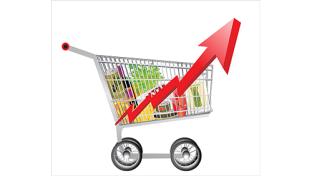Reducing Supermarket Food Waste with Dynamic Pricing
The ability to react and cater to consumer demand is nearly always a competitive advantage, but it also comes at a price. Naturally, when a shopper heads to the store to buy their groceries, they expect everything on their list to be available, and their products fresh.
But as supermarkets manage a growing number of products with varying expiration dates, they’re faced with the increasing challenge of selling these items before they expire while making sure they generate as much profit as possible. Failing to accomplish this not only hurts the retailer’s bottom line, but also leads to unnecessary food waste. In fact, one-third of food produced for consumption is lost or wasted globally, and grocers are significant contributors.
In order to save sales and limit losses, grocers often incentivize shoppers to make purchases by discounting products nearing their sell-by date. However, the challenge is that they often struggle to find the perfect pricing and timing balance that will maximize sales and also minimize the discount they need to offer. They walk a thin line of discounting too early or offering discounts that are too high.
With hundreds or thousands of SKUs, internal teams simply can’t manage the complexity of this process. Fortunately, the emergence of AI-enabled solutions makes responsive price strategy on perishable foods far simpler and more profitable.
Let’s explore how artificial intelligence allows grocery retailers to bypass old roadblocks by enabling dynamic pricing strategies that pad margins and reduce food waste.
Traditional Limitations to Pricing
Historically, responsive price adjustments were a hassle, or even impossible, especially in physical stores. The process relied on rules-based algorithms that required significant manual oversight.
Picture the pricing gun — employees have to manually walk through the store and change the price on each individual product if there is a sale or special offer on these items. For supermarket and food retailers, the selling period for marked down products is very short, creating a major pain point when attempting to optimize prices in real time.
These obstacles have led to the development of new tools that automate efforts around identifying optimal prices, and enable retailers to make the resulting adjustments quickly.
Optimizing price around sell-by dates
Today, the use of artificial intelligence has led to breakthroughs in markdown pricing. Aggregating demand behavior (historical and current) with inventory information, competitor pricing and sell-by dates allows for pricing strategies that can be optimized in real time, across all areas of the business, and at scale.
For example, bananas that begin to ripen need to be sold while consumers are still willing to pay for them, but not before a new shipment comes in. Providing discounts to shoppers on products that are still fresh gives shoppers an incentive to buy now. This can even be done on a granular, individual store level, as inventory and consumer buying patterns vary based on store geographies. What this means for customers is that products are available at any time at the best possible price, ultimately leading to less wasted food.
Increase profitability through product affinity
Retailers can also increase profitability by optimizing pricing on products with strong affinity. Analyzing data on products that are sold together, retailers can detect cross-sell opportunities and mark down one product while driving sales of other related products at full price.
As shoppers head to the grocery store for the Fourth of July, retailers can find areas to increase sales with perishable and non-perishable items typically paired together. For example, offering a markdown on cherries nearing their sell-by date, if bought with pie crust, or similarly, full-priced hotdogs and discounted buns.
By linking multiple items, retailers can lower prices of certain products that may have otherwise expired while still increasing the bottom line by ensuring sales of higher-margin items.
Empowering retailers to reduce food waste and better serve shoppers
When a business deploys dynamic pricing, they become more sustainable — both environmentally and financially. But it also has the benefit of generating loyalty among shoppers who receive the best deals and competitive prices. In addition to time-sensitive food, retailers can also see advantages of markdown pricing for seasonal items or products with short selling cycles.
With dynamic pricing driven by AI, retailers gain a holistic view of their entire inventory in real time, as well as the connections between products, and can optimize their strategies on the fly in order to reduce food waste and better serve shoppers.







